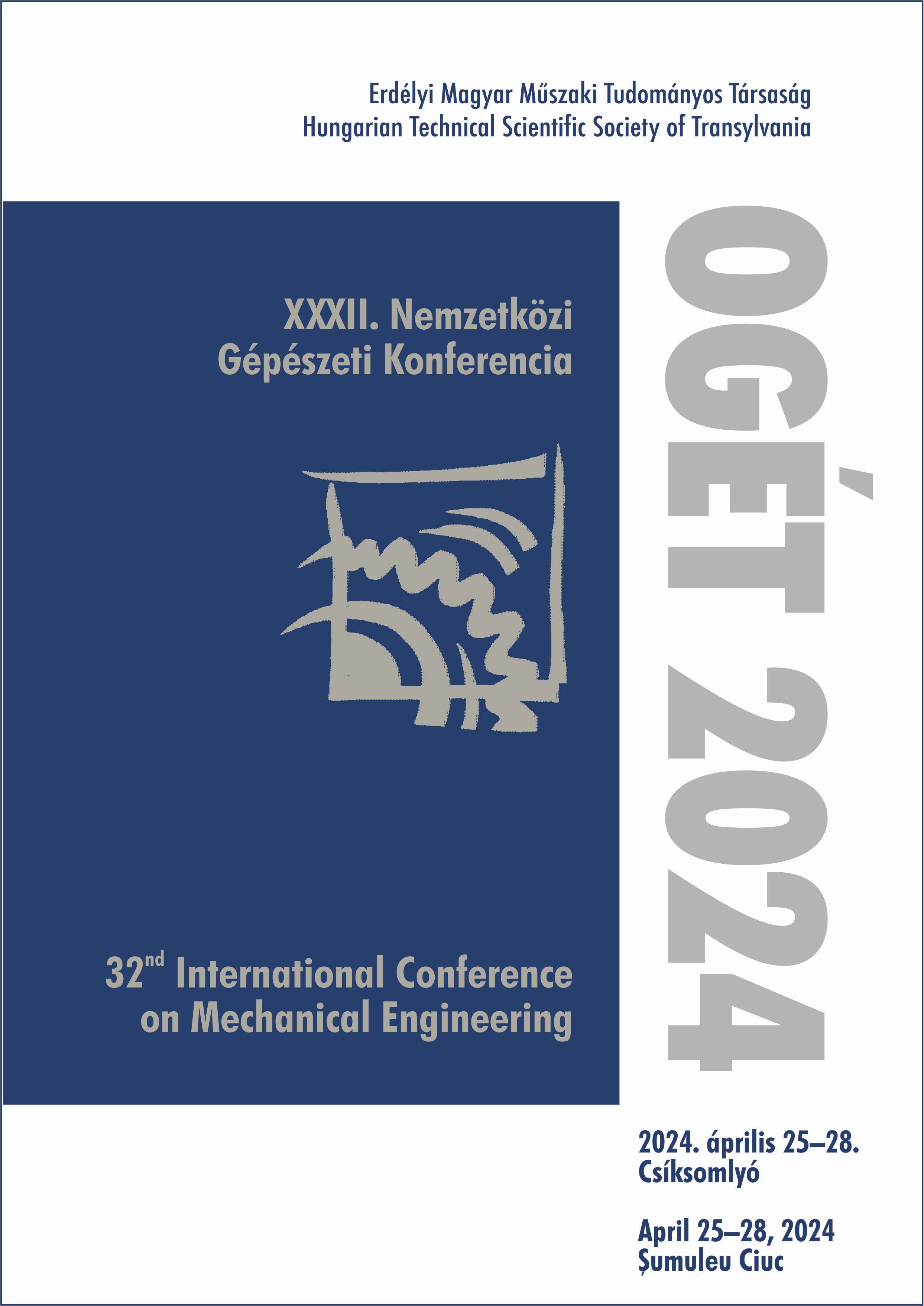A szálvágási szög és forgácsolásindukált sorja közötti összefüggés vizsgálata szénszálerősítésű polimer kompozitban
Analysis of the relationship between fibre cutting angle and machining-induced burr in carbon fibre-reinforced polymer composites
Keywords:
CFRP, burr, unidirectional reinforcement structure, digital image processing, drilling, /, sorja, egyirányú erősítőstruktúra, digitális képfeldolgozás, fúrásAbstract
The fibre cutting angle, determined by the direction of the cutting speed and the direction of the reinforcement fibres, has a significant impact on the quality of the drilled unidirectional carbon fibre-reinforced polymer (UD-CFRP) composites. A deeper understanding of the relationship between the occurrence of drilling-induced burrs and the fibre cutting angle is necessary to develop advanced drilling processes. A method based on digital image processing has been developed to determine this relationship and describe it with functions. The results suggest that the closer the fibre cutting angle to ~100°, the larger the probability of burr occurrence.
Kivonat
Az egyirányban szénszállal erősített polimer (UD-CFRP) kompozit anyagok fúrása során, a forgácsolási sebesség iránya és az erősítőszálak iránya által meghatározott, szálvágási szög jelentős hatással van az elkészült alaksajátosság minőségére. Korszerű forgácsolási eljárások kidolgozása érdekében, szükséges a forgácsolásindukált sorja előfordulása és a szálvágási szög közötti kapcsolat mélyebb ismerete. Erre a célra kidolgoztunk egy digitális képfeldolgozáson alapuló eljárást, amivel ez a kapcsolat függvényekkel leírható. Az előzetes eredmények azt sugallják, hogy minél közelebb van a szálvágási szög a kritikus 100°-hoz, annál nagyobb a sorja keletkezésének valószínűsége.
References
D. I. Poór, N. Geier, C. Pereszlai, és J. Xu, „A critical review of the drilling of CFRP composites: Burr formation, characterisation and challenges”, Composites Part B: Engineering, köt. 223, o. 109155, 2021, doi: https://doi.org/10.1016/j.compositesb.2021.109155.
W. Liu, X. Qin, S. Li, és X. Wang, „Experimental research on the matrix cracks and delamination distribution and their monitoring methods during drilling UD-CFRP”, Int J Adv Manuf Technol, köt. 130, sz. 3, o. 1595–1615, jan. 2024, doi: 10.1007/s00170-023-12733-y.
F. Wang, X. Wang, X. Zhao, G. Bi, és R. Fu, „A numerical approach to analyze the burrs generated in the drilling of carbon fiber reinforced polymers (CFRPs)”, Int J Adv Manuf Technol, köt. 106, sz. 7, o. 3533–3546, febr. 2020, doi: 10.1007/s00170-019-04872-y.
G. Magyar, D. Károly, J. Xu, és N. Geier, „Analysis of drilling-induced geometrical damages in basalt and carbon fibre-reinforced polymer (BFRP and CFRP) composites”, Int J Adv Manuf Technol, köt. 123, sz. 1, o. 357–372, nov. 2022, doi: 10.1007/s00170-022-10173-8.
N. Geier, T. Szalay, és M. Takács, „Analysis of thrust force and characteristics of uncut fibres at non-conventional oriented drilling of unidirectional carbon fibre-reinforced plastic (UD-CFRP) composite laminates”, Int J Adv Manuf Technol, köt. 100, sz. 9–12, o. 3139–3154, febr. 2019, doi: 10.1007/s00170-018-2895-8.
C. Wang, L. Wen, W. Ming, Q. An, és M. Chen, „Experimental study on effects of fiber cutting angle in milling of high-strength unidirectional carbon fiber–reinforced polymer laminates”, Proceedings of the Institution of Mechanical Engineers, Part B: Journal of Engineering Manufacture, köt. 232, sz. 10, o. 1813–1824, aug. 2018, doi: 10.1177/0954405416679868.
N. Geier, G. Póka, Á. Jacsó, és C. Pereszlai, „A method to predict drilling-induced burr occurrence in chopped carbon fibre reinforced polymer (CFRP) composites based on digital image processing”, Composites Part B: Engineering, köt. 242, o. 110054, aug. 2022, doi: 10.1016/j.compositesb.2022.110054.


